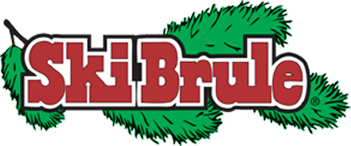Friday night the crew was out in full force making snow on Log Jam, Bunny and Bambi Playground! A good 3-5 inches of snow was made and it is sticking around. With temperatures dropping at night the process to open a run goes quickly. However, snow making is not an easy task, there are a lot of variables that go in to it and the crew making the snow has to be educated in the process. Our crew are snow making scientists and today you will be too because today’s class is Snow Making 101!
First and foremost, we absolutely need cold weather in order to make snow. No equipment arsenal in the world can produce good machine-made snow without it! 32 degrees Fahrenheit is the freezing temperature for water to turn into snow crystals, but ideal snow making conditions call for temperatures to be 28 degrees or lower.
Aside from the air temperatures, our crew also keep an especially close eye on the wet bulb. The wet bulb temperature is a combination of the air temperature and the humidity, and is the most critical indicator for snow making. A wet bulb in the low to mid 20s means we can even make snow at or above 32 degrees sometimes! In a nutshell, as the temperature and humidity drop, the amount of snow made per hour goes up.
Water and compressed air is the combination that creates our snow! Compressors create the compressed air (41,000/cfm) which is then pushed through miles of snow making air pipes that line the mountain. Another set of parallel snow making pipes is used to pump up to (4,700/gpm) of water up the mountain. All the water is drawn from our snow making pond located in our base area, converted into snow over the winter, and then returned naturally to the water table and pond in the springtime when the snow melts.
The snow gun serves as the mixing chamber for the water and air. Machine made snow is more durable than natural snow, and is actually better for getting a great snow base here at Ski Brule! Natural snowflakes have 6 arms, or dendrites that spread away from the flake’s core, and create the symmetrical crystals that make them so pretty-but also makes them so fragile! Machine made snow on the other hand is a simple ball of snow-no arms to break off and get compacted down, thus being more durable for creating and maintaining a base.
The final touch in the snow making process is our staff! Our snow makers and groomers are on call 24 hours a day, 7 days a week to be on the mountain, taking advantage of ideal conditions the moment they arrive. They work all night to prepare the mountain for you to enjoy skiing, riding and tubing. Even when we don’t get to make snow on a certain night, the grooming staff will be hard at work all night to get the slopes looking and feeling like there is a nice fresh coat of snow!
So there you have it! You are now a Snow Making Scientist! We wish it were as simple as just turning them on and letting them make snow but as you can see there is a lot more that goes it to it than just turning them on! We were excited to make snow Friday night and we have many more nights in the near future that are looking like good conditions!
Do your snow dance!

Recent Comments